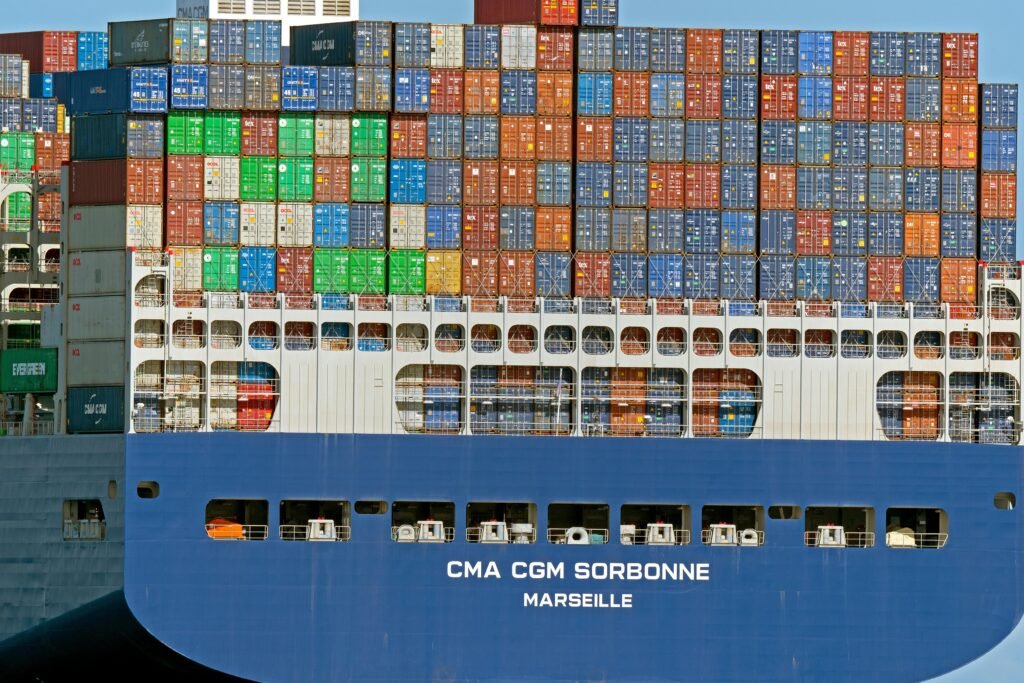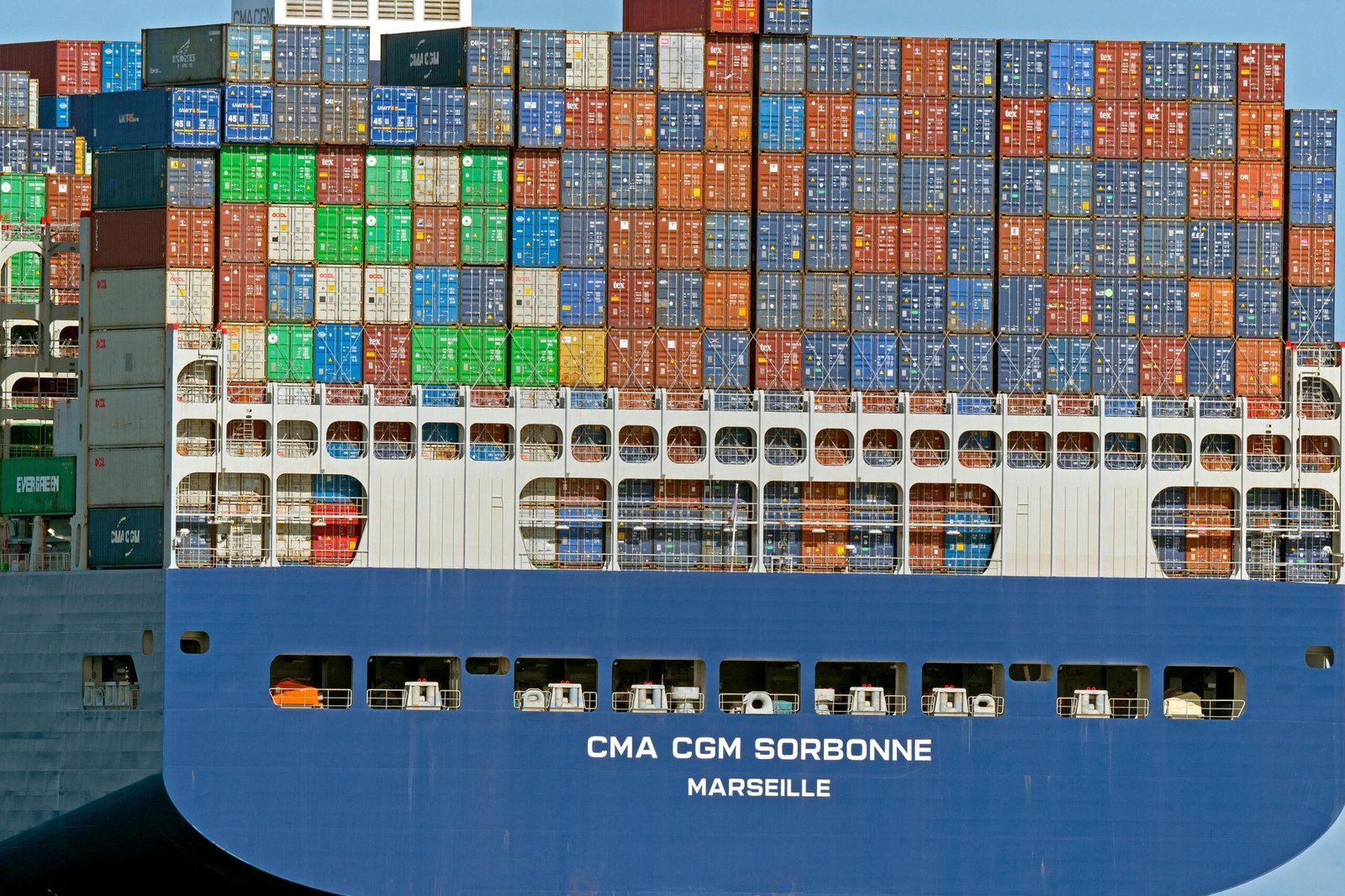If you’ve ever stopped to consider the everyday objects that surround you, chances are that containers have played a significant role in your thoughts. From the coffee cup that held your morning brew to the lunchbox that stored your midday meal, containers are an integral part of our daily lives. But have you ever wondered about the advancements in container manufacturing that have made these objects more efficient and convenient for us? In this article, we will explore the innovations that have revolutionized container manufacturing, as industries embrace technology to enhance their products.

This image is property of images.pexels.com.
Introduction to Container Manufacturing
Overview of container manufacturing
Container manufacturing is the process of producing containers that are used for various purposes such as storage, transportation, and packaging of goods. Containers are essential in modern-day logistics and play a critical role in supply chain management. They ensure the safe and efficient transportation of goods across borders and continents.
Historical development of container manufacturing
Container manufacturing has a rich history that can be traced back to ancient times. The earliest forms of containers were made from natural materials such as clay, wood, and woven fibers. Over time, containers evolved, and advancements in materials and manufacturing techniques led to the development of metal containers, such as tin cans and steel drums.
However, the real revolution in container manufacturing came with the invention of the standardized shipping container. In the 1950s, an American entrepreneur named Malcolm McLean introduced the concept of intermodal containers, which could be easily transferred between different modes of transportation like ships, trucks, and trains. This innovation revolutionized the shipping industry, leading to increased efficiency and reduced costs.
Importance and significance of container manufacturing
Container manufacturing plays a crucial role in global trade and commerce. The standardized shipping container has significantly contributed to the growth of international trade by simplifying logistics and enabling efficient transportation. The ability to securely pack goods into containers ensures that they reach their destination intact, regardless of the length of the journey or the mode of transportation.
Container manufacturing also has economic significance as it creates employment opportunities and drives technological advancements. The continuous development and improvement in container manufacturing techniques have led to increased productivity, reduced costs, and enhanced sustainability in the industry.
Role of Technology in Container Manufacturing
Impact of technology in container manufacturing
Technology has had a profound impact on container manufacturing, revolutionizing the industry and enhancing efficiency. From the design phase to production and maintenance, technology has streamlined processes, increased automation, and improved overall performance. Computer-aided design (CAD) software enables precise modeling and simulation of container designs, reducing errors and optimizing functionalities.
Automation and robotics in container manufacturing
Automation and robotics have significantly transformed the container manufacturing process. Robots are now used for various tasks, including welding, cutting, and assembling, improving precision and speed. Automated systems have reduced human error, increased productivity, and improved worker safety by taking on repetitive and physically demanding tasks.
Advantages and disadvantages of technology in container manufacturing
The integration of technology in container manufacturing has numerous advantages. Improved efficiency and accuracy in the design and production phases lead to better container quality. Automation and robotics enhance productivity, while data analytics provide valuable insights for optimization and decision-making.
However, there are also some disadvantages to consider. The initial investment for implementing advanced technology can be significant, and the cost of maintenance and upgrades must be considered. Additionally, reliance on technology may lead to job displacement for manual laborers, requiring retraining and reskilling efforts to address this challenge effectively.

This image is property of images.pexels.com.
Innovative Materials in Container Manufacturing
Introduction to innovative materials
Innovative materials are revolutionizing container manufacturing and offering new possibilities. These materials go beyond traditional materials such as steel and aluminum and bring advancements in strength, durability, weight reduction, and sustainability. Manufacturers are embracing innovative materials to design containers that meet evolving industry requirements and environmental considerations.
Benefits and applications of innovative materials in container manufacturing
Innovative materials offer several benefits in container manufacturing. Lightweight materials, such as composite plastics and advanced alloys, contribute to fuel efficiency by reducing the weight of containers. High-strength materials ensure the safety and security of the goods inside. Sustainable materials, such as bio-based polymers or recycled plastics, help reduce the environmental impact of container production.
These materials find applications in a wide range of container types, including shipping containers, storage containers, and specialized containers for temperature-sensitive goods or hazardous materials. By utilizing innovative materials, container manufacturers can enhance the performance, functionality, and sustainability of their products.
Examples of innovative materials in container manufacturing
One example of an innovative material used in container manufacturing is fiber-reinforced polymer composite. This material combines the strength of fibers, such as carbon or glass, with a polymer matrix to create a lightweight yet durable material. Fiber-reinforced polymer composites offer high impact resistance, corrosion resistance, and insulation properties, making them suitable for a variety of containers.
Another example is bio-based polymers derived from renewable sources like plant-based starches or cellulose. These materials provide a sustainable alternative to traditional plastics, reducing reliance on fossil fuels and minimizing carbon footprint. Bio-based polymers can be used for various container components, including lids, handles, and inner linings, contributing to a more environmentally friendly container manufacturing process.
Smart Containers
Definition and concept of smart containers
Smart containers are a recent innovation in container manufacturing that involves integrating technology into containers to enable enhanced monitoring, tracking, and control. The concept revolves around embedding sensors, communication devices, and data analytics capabilities within containers, transforming them into intelligent assets that provide real-time information about their condition, location, and contents.
Features and functionalities of smart containers
Smart containers offer a range of features and functionalities that go beyond traditional containers. They can monitor and report temperature, humidity, pressure, and other environmental factors to ensure the safe transportation of perishable goods. Smart containers can also track their location in real-time, providing valuable data for logistics planning and supply chain management.
Furthermore, smart containers can detect impacts, vibrations, or tampering, sending immediate alerts to ensure the security and integrity of the goods they carry. Some advanced smart containers even have the ability to self-monitor and self-diagnose, enabling predictive maintenance and minimizing potential downtime.
Applications and benefits of smart containers
Smart containers find applications in various industries, including pharmaceuticals, perishable goods, and high-value goods. In the pharmaceutical industry, where temperature control is critical, smart containers can ensure the integrity of medications by providing real-time temperature monitoring and alerting when deviations occur.
The benefits of smart containers are numerous. Real-time tracking and monitoring enable improved supply chain visibility, reducing the risk of loss or theft and enhancing overall security. Efficient monitoring of environmental conditions helps minimize spoilage or damage to goods during transportation. Smart containers also contribute to regulatory compliance by providing detailed records of temperature, humidity, and other critical parameters.

This image is property of images.pexels.com.
Internet of Things (IoT) in Container Manufacturing
Introduction to IoT in container manufacturing
The Internet of Things (IoT) has become an integral part of container manufacturing, enabling connectivity and communication between containers and various components of the logistics ecosystem. IoT devices and sensors embedded in containers generate valuable data that can be used for monitoring, tracking, and optimizing container operations.
Utilizing IoT for efficient container management
IoT technology allows container manufacturers and logistics operators to gather real-time data on container location, temperature, humidity, and other parameters. This data can be used for route optimization, predictive maintenance, and reducing idle time. By leveraging IoT, container manufacturers can improve operational efficiency, reduce costs, and enhance customer satisfaction.
Benefits and challenges of implementing IoT in container manufacturing
Implementing IoT in container manufacturing offers significant benefits. Real-time data collection and analysis enable proactive decision-making, improving operational efficiency and reducing downtime. IoT-enabled containers also contribute to increased visibility and traceability, reducing the risk of cargo loss or damage.
However, implementing IoT in container manufacturing does come with challenges. Ensuring seamless connectivity and interoperability between different IoT devices and systems can be complex. Data security and privacy concerns also need to be addressed, as the increased connectivity may expose containers to potential cyber threats. Overcoming these challenges requires robust infrastructure, effective data management strategies, and strong cybersecurity measures.
Advanced Manufacturing Processes
Overview of advanced manufacturing processes
Advanced manufacturing processes have revolutionized container manufacturing, offering new techniques and capabilities. These processes utilize cutting-edge technologies such as additive manufacturing (3D printing), advanced machining, and laser cutting to enhance efficiency, accuracy, and customization in container production.
Additive manufacturing (3D printing) in container manufacturing
Additive manufacturing, also known as 3D printing, has the potential to transform container manufacturing by enabling rapid prototyping, customization, and complex geometries. 3D printing allows for the production of intricate container designs with reduced waste and improved material utilization. This technology also facilitates on-demand manufacturing, reducing lead times and inventory costs.
Other advanced techniques in container manufacturing
In addition to 3D printing, container manufacturing benefits from other advanced techniques such as laser cutting and advanced machining. Laser cutting offers precise and efficient cutting of various materials used in container manufacturing, including metals and composites. Advanced machining technologies enable the production of complex components and ensure high-quality finishes.
By embracing advanced manufacturing processes, container manufacturers can achieve higher productivity, improved quality control, and greater flexibility in meeting customer demands.
Digitalization and Data Analytics in Container Manufacturing
Digitization of container manufacturing processes
Digitalization has transformed container manufacturing by introducing digital tools and technologies that streamline processes and enhance efficiency. From inventory management to production planning and quality control, digital tools digitize and automate manual processes, reducing errors and enabling real-time data analysis.
Role of data analytics in optimizing container production
Data analytics plays a vital role in container manufacturing by providing actionable insights into operational performance and production efficiency. By analyzing data generated from sensors, IoT devices, or production systems, manufacturers can identify bottlenecks, optimize processes, and make informed decisions regarding resource allocation, maintenance schedules, and production schedules.
Data analytics also contributes to predictive maintenance, enabling manufacturers to detect potential equipment failures before they occur, minimizing downtime and preventing costly production disruptions.
Benefits and future developments
The benefits of digitalization and data analytics in container manufacturing are significant. Improved operational efficiency, reduced costs, and enhanced product quality are among the key advantages. Real-time data analysis enables quick decision-making and better resource allocation. Furthermore, data analytics facilitates continuous improvement by providing insights for optimization and identifying areas for innovation and product development.
In the future, container manufacturers can expect further advancements in digitalization and data analytics. Artificial intelligence and machine learning technologies will play a more prominent role in analyzing complex data sets, improving predictive capabilities, and enabling autonomous decision-making. Integration with other digital technologies, such as IoT and robotics, will further enhance container manufacturing processes.
Energy Efficiency and Sustainable Practices
Introduction to energy-efficient container manufacturing
Energy efficiency has become a crucial aspect of container manufacturing due to increasing environmental concerns and the need to reduce carbon emissions. Energy-efficient container manufacturing focuses on reducing energy consumption, promoting the use of renewable energy sources, and adopting sustainable practices throughout the production process.
Utilizing renewable energy sources in container production
Container manufacturers can contribute to energy efficiency by utilizing renewable energy sources in their production facilities. Installing solar panels or wind turbines to generate clean energy reduces dependence on fossil fuels and lowers carbon emissions. Furthermore, energy-efficient lighting and cooling systems help reduce overall energy consumption in manufacturing facilities.
Sustainable practices for reducing the environmental impact
Container manufacturing can adopt sustainable practices to minimize its environmental impact. Recycling and reusing materials and components can help reduce waste and conserve resources. Implementing waste management systems ensures proper disposal and recycling of materials. Container manufacturers can also use eco-friendly coatings and paints that are free from harmful chemicals.
Innovation in container design can also contribute to sustainability. Lightweight materials, optimized designs, and improved insulation contribute to fuel efficiency during transportation. By embracing energy efficiency and sustainable practices, container manufacturers can reduce their carbon footprint and contribute to a greener future.
Safety and Security Innovations
Improving safety standards in container manufacturing
Container manufacturers are continuously innovating to improve safety standards in container production. Ensuring robust structural integrity is a primary focus to guarantee containers withstand the rigors of transportation. Quality control processes, adherence to international safety standards, and rigorous testing are fundamental in ensuring the safety of containers.
Innovations in container security measures
Container security is a critical concern, especially in international shipping. Container manufacturers have introduced various innovations to enhance security measures. For instance, tamper-evident seals and locking mechanisms provide an extra layer of protection against unauthorized access. GPS tracking and IoT-enabled security solutions enable real-time monitoring and tracking of containers to detect potential security breaches.
Securing containers during transportation
Container manufacturers recognize the importance of securing containers during transportation to minimize the risk of cargo theft, damage, or tampering. Innovative container designs, such as interlocking systems or reinforced structures, enhance container security. Additionally, container manufacturers collaborate with logistics providers to develop secure handling and fastening systems, ensuring containers remain securely attached during transportation.
By continuously investing in safety and security innovations, container manufacturers help protect goods, prevent accidents, and maintain the integrity and credibility of the global supply chain.
Future Trends in Container Manufacturing
Emerging technologies for container manufacturing
Container manufacturing is set to witness further advancements with emerging technologies. One emerging technology is nanotechnology, which involves manipulating materials at the molecular level. Nanotechnology could enable the production of containers with enhanced strength, improved durability, and advanced functionalities.
Another emerging technology is blockchain, which offers secure and transparent digital transactions. Applying blockchain in container manufacturing could enhance traceability, authenticity, and provenance of containers and their contents, reducing the risk of counterfeiting and ensuring the integrity of the supply chain.
Anticipated advancements and innovations
In the future, container manufacturing can expect advancements in areas such as advanced materials, smart coatings, and energy-efficient designs. Further automation and robotics integration will boost productivity and reduce labor-intensive processes. The use of augmented reality (AR) and virtual reality (VR) in container design and manufacturing may provide immersive experiences and increase collaboration.
Furthermore, advancements in data analytics, artificial intelligence, and machine learning will enable better predictive capabilities and autonomous decision-making. This will contribute to optimizing container manufacturing processes, reducing costs, and improving overall efficiency.
The potential impact on supply chain and transportation
The future trends and advancements in container manufacturing will have a significant impact on the supply chain and transportation industry. Improved container functionality, enhanced security measures, and real-time data analytics will increase supply chain visibility and traceability, leading to more efficient and reliable logistics operations.
The integration of emerging technologies will also enable better collaboration between stakeholders in the supply chain, facilitating seamless information exchange and decision-making. This will result in reduced lead times, improved customer satisfaction, and more sustainable transportation practices.
In conclusion, container manufacturing has evolved significantly over time, driven by technological advancements, innovative materials, smart technologies, and a focus on sustainability. The continuous development and integration of these elements will shape the future of container manufacturing, enhancing efficiency, safety, and security, and contributing to a more sustainable and connected global supply chain.
